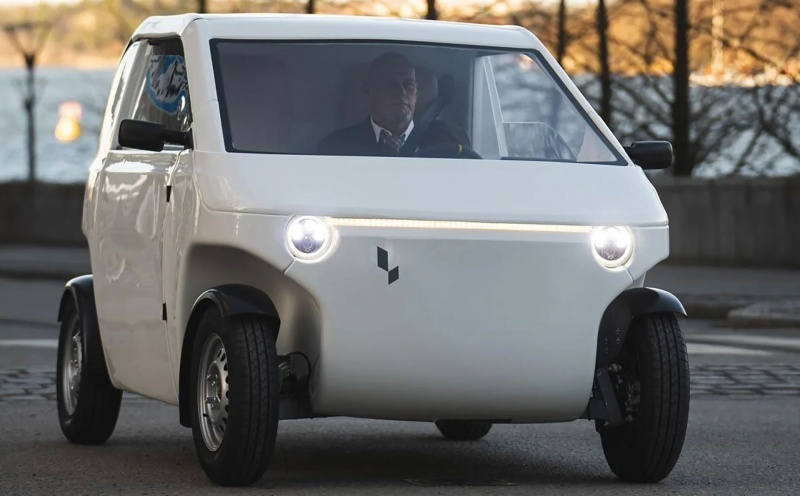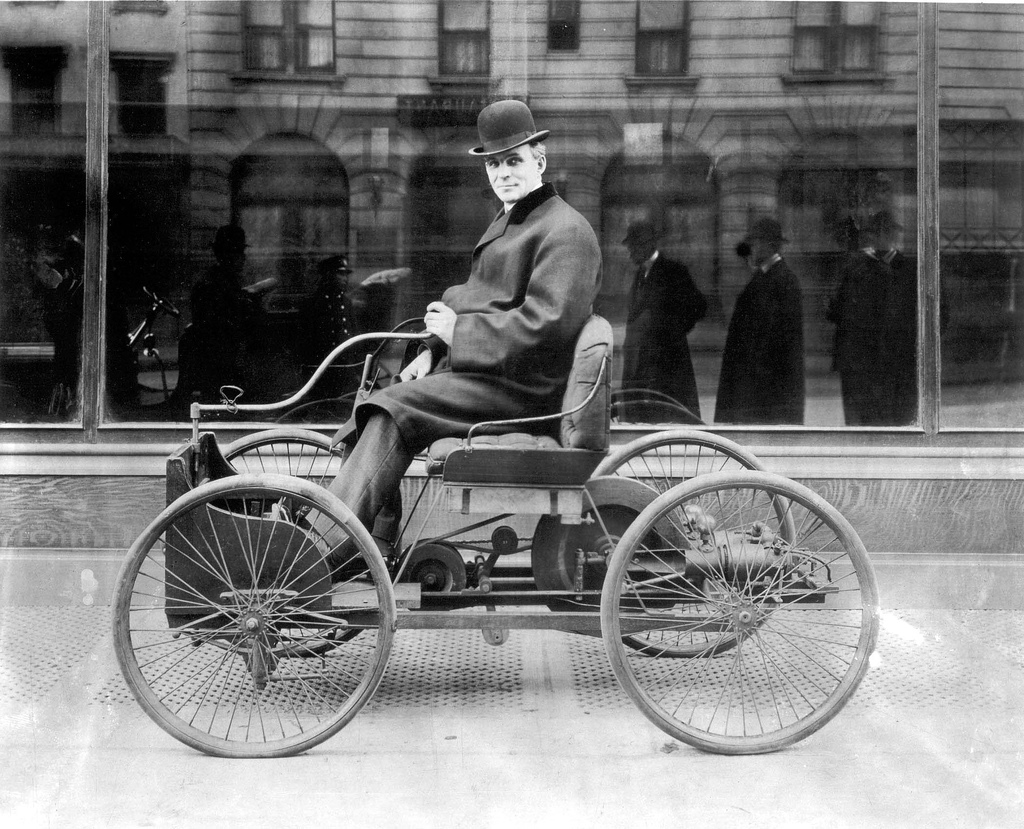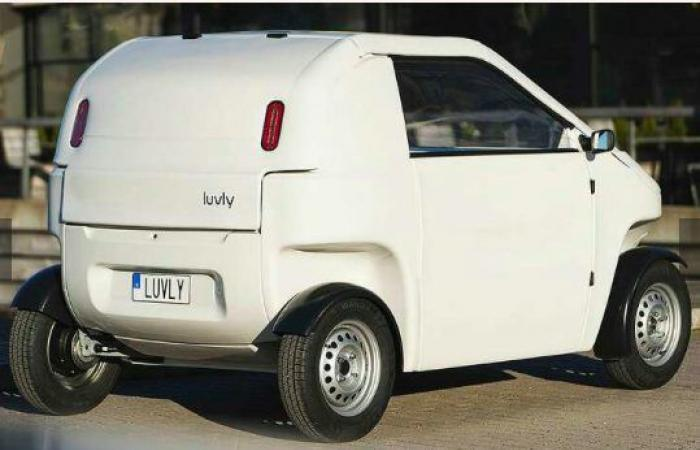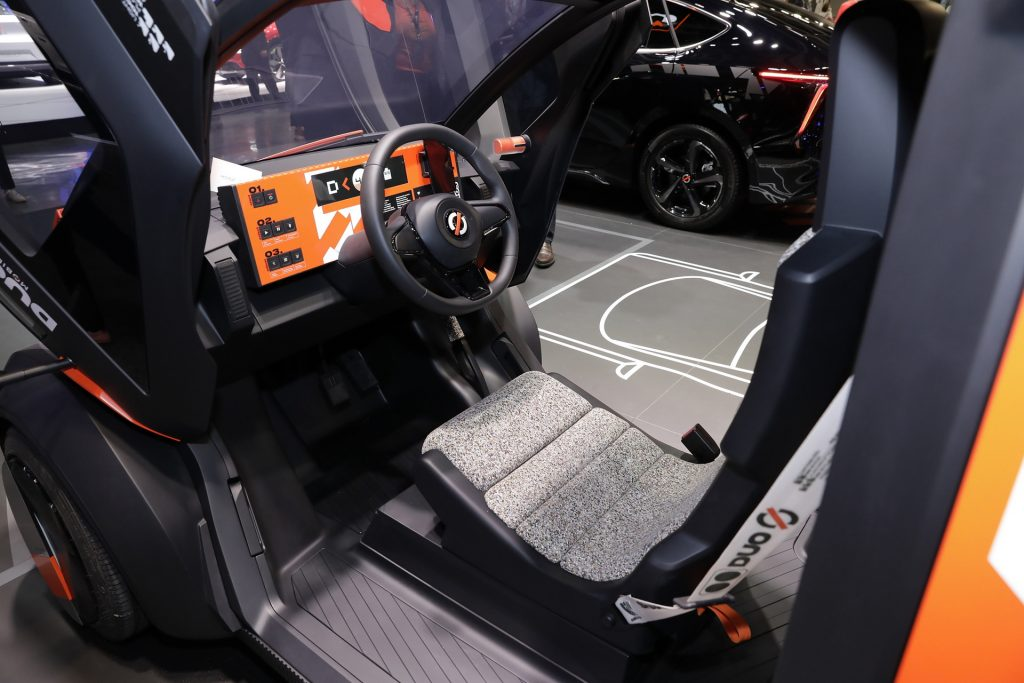
Sometimes a single letter changes the meaning of a word. A quadracycle (with an a in the middle) describes a small, human-powered, four wheel vehicle. In contrast, a quadricycle (with an i in the middle) is a small, motorized four wheel vehicle. This word with an i is the topic of this weblog post. A quadricycle was officially defined by the European Union in 1992, and refined and divided into two official types, in 2006: Light = L6e whose unladen mass < = 425 kg, not including the mass of the batteries in case of electric vehicles, with a maximum design speed < = 45 km/h, and a maximum power < = 6 kW; and, Heavy = L7e whose unladen mass excluding batteries < = 450 kg for passenger vehicles or < = 600 kg for freight vehicles, with a maximum design speed < = 90 km/h, and a maximum power < = 15 kW. Other rules also apply. In other parts of the world, especially North America, the term microcar is used instead of quadricycle.
The driving age limit for these vehicles varies with the jurisdiction. L6e can be driven in France by someone who is 14. In Finland the age limit is 15, but in general in Europe it is 16. For many secondary school students, a L6e quadricycle has replaced the bicycle, moped and/ or bus, for transport to school and leisure activities. For L7e vehicles, the general minimum age to drive is 18.
Yet, quadricycles can be dangerous. Locally, two girls (15 and 16 years old) were killed in Steinkjer 2023-07-13 when their L6e vehicle collided with a conventional passenger car at a hilltop with limited vision, on county road 6982.
Driving behind a quadricycle can be a frustrating experience. They are difficult to pass at the best of times on Norwegian roads. There are few places where they can pull in to allow other vehicles to pass, and some drivers of them have no intention of making it easier for others to pass them.
The name quadricycle is derived from Henry Ford’s (1863 – 1947) first vehicle design, the Quadricycle, made from 1896 – 1901. It ran on four bicycle wheels, with a mid-mounted engine using chains to drive the rear wheels. It had a maximum speed of 32 km/h. Various vehicles were handbuilt, until production of the model ceased.

LUVLY
LUVLY, the company, was founded in 2015 in Stockholm, Sweden. Unfortunately, I have not been able to find out what they have been doing between then and now. Surely, it doesn’t take eight years to design a quadricycle L7e, even one with innovative design and production features?
The company’s electric vehicle (EV), is the LUVLY 0. It has been designed to be small and light, in two different ways. First, to reduce shipping costs and emissions, by shipping what amounts to a flatpack of 20 vehicles in a single container, ready to assemble in an assembly plant at various locations throughout the world, particularly in Europe. Second, in terms of the assembled vehicle. It is light because it lacks features that others would regard as fundamental. Think fenders or a rear window or a dashboard or air bags or charging technology.
Instead of providing a screen to provide information to drivers, LUVLY relies on the driver coming equipped with a smartphone, to be used with the LUVLY app.
According to press reports, The LUVLY O quadricycle will be launched in 2023, in Stockholm, Paris and Madrid. There aren’t many days left for that to happen! LUV stands for light urban vehicle. It is 2.7 m long, 1.5 m wide, and 1.4 m tall. It has a curb weight of 380 kg. Its 6.4 kWh battery pack, it has a maximum range of 100 km, which is adequate for most commuting, but not much else.
It has a top speed of 90 km/h. Currently, that speed is the maximum allowed on any of the roads we commonly take in Norway. Other places, including a future Trøndelag, when the E6 highway is modernize, allow 110 km/h.
It comes with two portable batteries that weigh 15 kg each, and plug into ordinary wall sockets for charging. They cannot be charged using conventional EV chargers. This may be fine at a workplace or house, but I wonder what happens if one runs low on electricity at a shopping mall?
Quadricycles are not subject to the same safety rules as conventional cars, including EVs. Thus, they are not required to be physically crash tested or to have airbags installed.
Euro NCAP’s first tests in 2014 on heavy (L7e) quadricycles showed major shortcomings in safety. The organisation called for more realistic requirements from the regulators and for quadricycle manufacturers to take more responsibility for the safety of their products. Quadricycles still lack basic safety features found on small cars. Legislators fail to challenge manufacturers to do more and give a false impression to consumers that these vehicles are fit for purpose. They are not.
The LUVLY O has been crash tested using computer simulations. Having studied computer simulation, I admire this approach. Unfortunately, crashing vehicles gives insights that simulations cannot match.
I am intrigued by LUVLY’s unconventional approaches to manufacturing. Flat panels and connectors are used to construct strong, three-dimensional sandwich composite structures resulting in a strong but light chassis.
Currently, LUVLY claims its approach to manufacturing is unique. It may be suitable to have a factory for manufacturing components in one location in the world, and numerous assembly facilities elsewhere, but this approach to production may not be cost effective. LUVLY admits there won’t be a large rollout immediately. I am skeptical that they will be able to transfer this technology to others.
Most vehicles have production runs that number in thousands of vehicles, as a minimum. Exceptions exist. It may be possible to produce limited editions of exotic vehicles, but producing limited editions of an ultra-basic quadricycle in not one of them.
LUVLY will probably never be major manufacturer of vehicles, but may end up as a minor producer. There is a market for niche products. There may be a market for minimalist commuter vehicles and delivery vans. I am not totally convinced that a sports car will be viable.

Vehicles have to be appropriate for the roadways on which they are used, as well as the people using them. At this moment, there is insufficient data to either confirm or deny the safety characteristics of a LUVLY 0. It could well be a suitable city car if used at low speeds, in some environments. It is more difficult to imagine its use in more rural environments, where it could meet large vehicles travelling at high speeds on convoluted roads. While younger drivers have quicker reactions than older drivers with more sluggish movements, I would not encourage anyone (young or old) to drive a LUVLY 0 or any other quadricycle, until adequate safety equipment is in place.

The most popular EV among the members of my amateur radio group, is a Mitsubishi I-Miev. As a used vehicle it is cheap to buy and to run. More importantly, it has passenger car safety features, even if these are not top of the class. These are used almost exclusively as commuter vehicles. Another choice is the Renault Twizy, which has just stopped production 2023-09. It is a two-seater quadricycle that is equipped with an airbag. Its replacement, the Mobilize Duo quadricycle comes with three seats and an airbag. It can be configured as an L6e vehicle with a top speed of 45 km/h, or an L7e vehicle with a top speed of 80 km/h. This is made by Renault, but is only available on a subscription basis.
Note: Once again, I would like to thank Don Wong for bringing the LUVLY 0 to my attention. Thanks, Don!


Luvly isn’t!